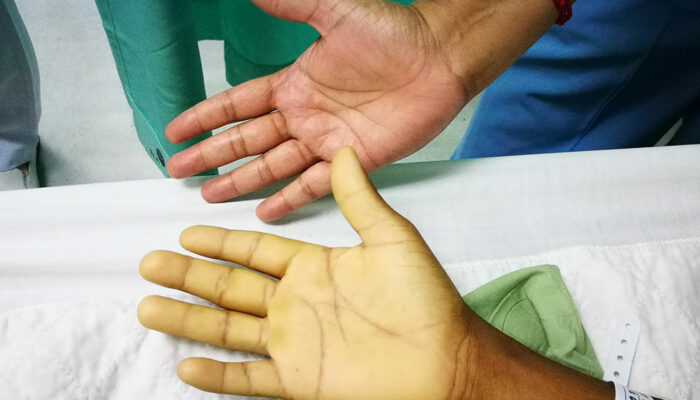
6 Early Signs of Lupus
Lupus is an autoimmune disorder in which the body’s immune system attacks its healthy tissues and organs, resulting in inflammation and tissue damage. It can affect the skin, joints, kidneys, heart, lungs, and brain. Some potential triggers include genetics, environmental exposures such as radiation or toxins, underlying medical conditions such as HIV/AIDS, hormone imbalances, stress, and other psychological factors like depression. Treatment options include anti-inflammatories, immunosuppressive medications, and lifestyle modifications to reduce stress levels. Early warning signs of lupus include the following:
1. Light sensitivity
Sunlight, fluorescent lighting, and other light sources can cause flare ups in patients living with lupus, triggering symptoms such as headaches, fatigue, or even joint pain. Photophobia is also a real issue for some patients who report an aversion to light due to extreme discomfort when exposed to any illumination. While too much exposure to bright lights and direct sunlight should be avoided by lupus patients, numerous medications are available for those who wish to decrease their light sensitivity levels. It is best to consult a doctor for advice on these treatments on a case-by-case basis, depending on personal diagnosis and treatment plan.
2. Hair thinning and hair loss
Lupus causes a malfunction in the immune system, producing antibodies that attack healthy tissue, including skin cells, resulting in inflammation and scarring of the scalp, which can lead to visible hair thinning and weakening of hair strands. Consequently, these affected hairs may become more prone to breakage and fall out entirely. Hair follicles can experience miniaturization or shrinkage, leading to failure of the growth of new strands. While there is presently no cure for Lupus induced hair loss per se, there are options available for managing symptoms, such as scalp medications, low-level laser therapy treatment, various scalp stimulators, and topical ointments.
3. Joint pain and swelling
Lupus can cause joints to swell up, leading to further discomfort and limited mobility. The severity of joint pain may vary significantly depending on individual factors such as age, prior medical conditions, or other complicating issues. It is vital for patients experiencing any combination of these symptoms to report them promptly to their primary healthcare provider to receive a timely diagnosis and appropriate treatment plan.
4. Butterfly-shaped rash on the face.
This is a common physical sign of Systemic Lupus Erythematosus, a chronic autoimmune disorder. This butterfly shaped rash usually appears across both cheeks and nose and can become itchy, flaky, or scaly. Such rashes typically vary in intensity and might get worse when exposed to sunlight or other environmental factors. While there is no cure for Systemic Lupus Erythematosus, treatment options can help reduce symptoms and improve the patient’s quality of life.
5. Fingers and toes that turn white or blue
This condition is known as Raynaud’s phenomenon. This disorder occurs when small arteries that carry blood to the skin become narrowed, restricting circulation and reducing oxygen levels in the affected area. The result is a decreased flow of oxygen-rich blood which causes discoloration, numbness and tingling in the extremities. Additionally, people with lupus may experience muscle pain and aches due to a lack of blood supply. While this condition does not cause severe health issues for most individuals, patients should seek medical attention if they notice new or worsening episodes of white or blue fingers and toes. Primary care physicians can further evaluate these symptoms and refer patients on to specialists for diagnosis if necessary.
6. Chest pain and shortness of breath
Chest pain can range from a mild ache to severe crushing sensations and may be accompanied by tightness or pressure in the chest area. Shortness of breath is caused by a decrease in oxygen saturation levels due to inflammation in the alveoli, which affects their ability to repopulate with air. In addition, affected individuals often suffer from chest pain due to pleurisy or inflammation of the tissue layers that line the lungs and chest wall. Symptoms can be alleviated through lifestyle changes such as quitting smoking, avoiding polluted areas, and using certain medications to reduce inflammation. Meanwhile, an expert opinion from a rheumatologist should always be sought out if chest pain or difficulty breathing develops so other underlying conditions can be ruled out.



